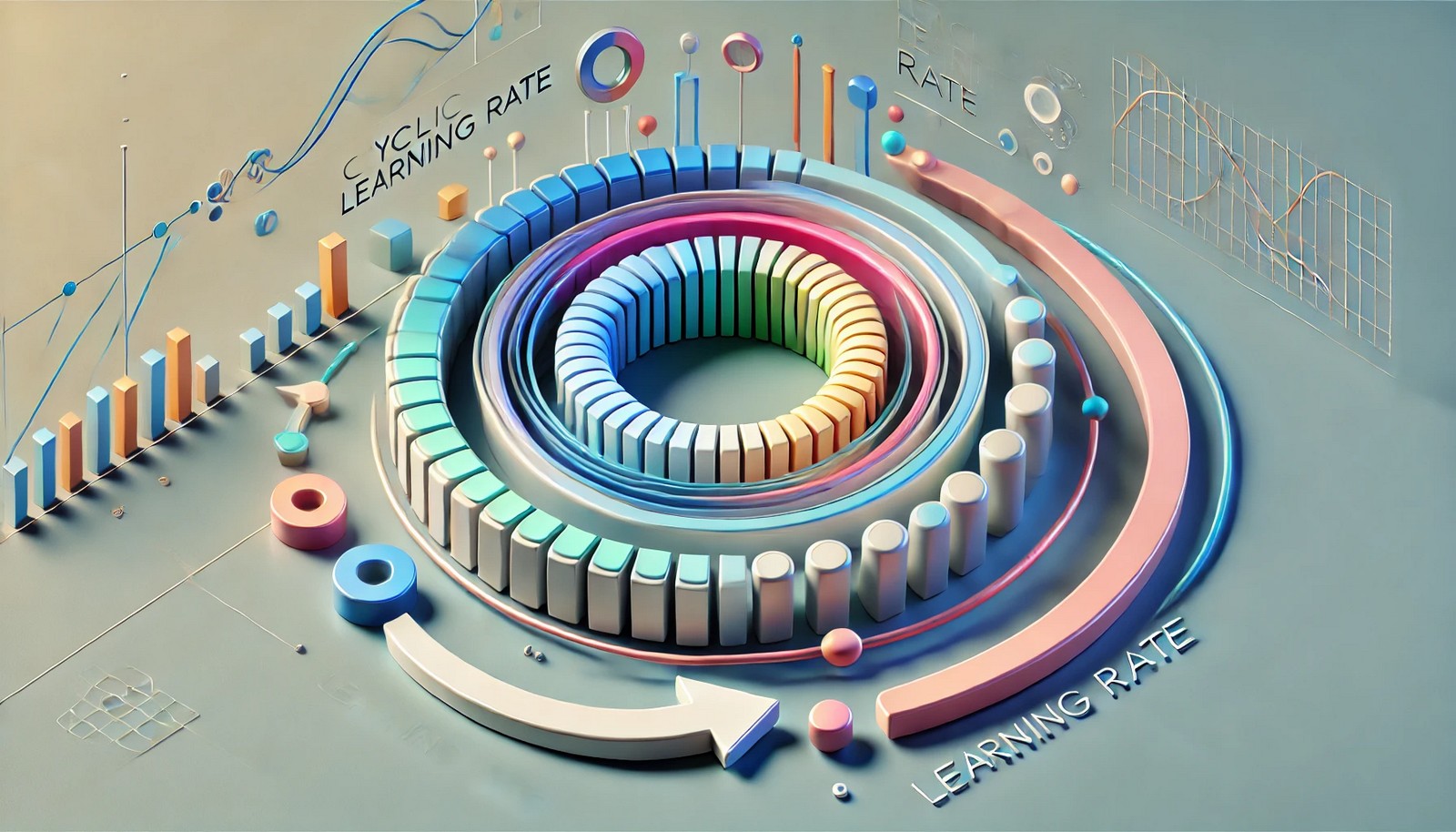Cyclic Learning Rate

Quick Navigation:
- Cyclic Learning Rate Definition
- Cyclic Learning Rate Explained Easy
- Cyclic Learning Rate Origin
- Cyclic Learning Rate Etymology
- Cyclic Learning Rate Usage Trends
- Cyclic Learning Rate Usage
- Cyclic Learning Rate Examples in Context
- Cyclic Learning Rate FAQ
- Cyclic Learning Rate Related Words
Cyclic Learning Rate Definition
Cyclic Learning Rate (CLR) is an adaptive training strategy in machine learning where the learning rate oscillates between two boundaries, rather than steadily decreasing over time. This approach can help escape local minima, leading to improved convergence and faster training times. By periodically adjusting the learning rate, CLR promotes more efficient exploration of the parameter space, often leading to better generalization and accuracy in deep learning models.
Cyclic Learning Rate Explained Easy
Imagine riding a bike up and down hills. Sometimes you pedal fast to speed up, and sometimes you slow down to control your pace. In machine learning, a cyclic learning rate is like this: it speeds up and slows down the "learning speed" of a model, helping it find the best path to learn.
Cyclic Learning Rate Origin
The concept of cyclic learning rates emerged from research into optimization techniques in deep learning. It was developed as a solution to the limitations of fixed or gradually decreasing learning rates, which sometimes get models stuck in local minima during training.
Cyclic Learning Rate Etymology
The term "cyclic" refers to the cycle-like oscillations in learning rate adjustments, looping between upper and lower boundaries.
Cyclic Learning Rate Usage Trends
In recent years, cyclic learning rates have become popular in neural network training, especially with architectures that demand high accuracy. Researchers and practitioners use CLR to optimize deep networks in fields like computer vision, natural language processing, and autonomous systems, where rapid and effective learning is crucial.
Cyclic Learning Rate Usage
- Formal/Technical Tagging:
- Machine Learning
- Deep Learning
- Optimization - Typical Collocations:
- "cyclic learning rate schedule"
- "CLR in training"
- "adjusting cyclic learning rate"
- "cyclic rate parameters"
Cyclic Learning Rate Examples in Context
- A cyclic learning rate can help neural networks escape local minima during training.
- In image classification, CLR enables faster convergence by dynamically adjusting the learning rate.
- Many deep learning frameworks offer cyclic learning rate options for custom training schedules.
Cyclic Learning Rate FAQ
- What is a cyclic learning rate?
A cyclic learning rate oscillates between two limits to improve the learning process during model training. - Why use cyclic learning rates?
Cyclic learning rates can prevent models from getting stuck in local minima, enhancing convergence. - How does a cyclic learning rate improve training?
It adjusts the learning rate periodically, enabling efficient exploration of parameter space. - What models benefit from cyclic learning rates?
Models in deep learning, especially for computer vision and NLP tasks, benefit from cyclic learning rates. - Who developed the cyclic learning rate concept?
Leslie N. Smith popularized CLR through research on training efficiency in deep networks. - How is the cycle length in CLR determined?
Cycle length is often determined through experimentation based on the dataset and model architecture. - Is cyclic learning rate better than constant learning rate?
For many applications, CLR outperforms constant rates, as it adapts to model needs during training. - Can I use CLR with any optimizer?
Yes, CLR works with popular optimizers like SGD and Adam, enhancing their performance in deep learning. - What fields apply cyclic learning rates?
Cyclic learning rates are applied in computer vision, natural language processing, and reinforcement learning. - Is CLR suitable for small datasets?
While beneficial, CLR shows more effectiveness in larger datasets where model complexity requires adaptive learning rates.
Cyclic Learning Rate Related Words
- Categories/Topics:
- Machine Learning
- Deep Learning
- Optimization Techniques
Did you know?
Cyclic learning rates gained traction when researchers found that cycling between bounds improved model training by allowing adaptive exploration. Today, CLR is a preferred choice for complex tasks like image recognition and language translation, where both accuracy and training efficiency are critical.
PicDictionary.com is an online dictionary in pictures. If you have questions or suggestions, please reach out to us on WhatsApp or Twitter.Authors | Arjun Vishnu | @ArjunAndVishnu

I am Vishnu. I like AI, Linux, Single Board Computers, and Cloud Computing. I create the web & video content, and I also write for popular websites.
My younger brother, Arjun handles image & video editing. Together, we run a YouTube Channel that's focused on reviewing gadgets and explaining technology.



Comments powered by CComment